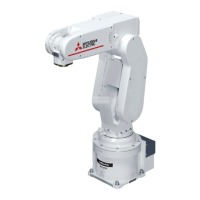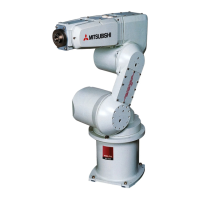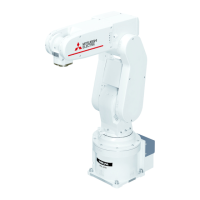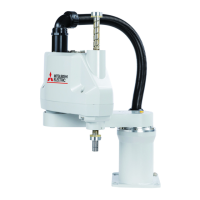3 MELFA Smart Plus card
List of function 3-5
3.1.2 Functions of B-type
Table 3-3 List of functions of B-type
Function name
Description
“SMART+1”
(*1)
MELFA-3D Vision
(Refer to the separate
instruction manual:
During the adjustment for the model-less recognition of
MELFA-3DVision, our AI and simulation technologies allow
to automatically adjust sensor parameters without needing
expert knowledge typically required.
function
(Refer to the separate
instruction manual:
BFP-A3663.)
(1) Maintenance simulation
In the simulation of an actual device or RT ToolBox3,
the timing of parts replacement or maintenance in a
repeated specific pattern of movement can be
estimated. You can consider maintenance cycle in
advance, and test robots to verify they are parts
friendly.
(2) Consumption degree calculation function
Based on the actual robot operation conditions (such
as the number of motor revolutions and load
conditions), the consumption degree of robot
components [%] is calculated, and the timing of
maintenance, inspection, and overhaul is displayed
and reported. The function brings maintenance
efficiency by reporting maintenance timing and setting
maintenance priorities, etc.
(3) Abnormality detection function
Failing or degrading robot parts can be detected at an
early stage. The robot controller can detect failing
reduction gears and encoder faults. An additional
sensor or analyzing computer is not required.
force sensor
(Refer to the separate
instruction manual:
BFP-A3510.)
A learning function that optimizes insertion, fitting, phase
match insertion, and contact detection by adjusting force
sense control parameters and operation speed. Programs
suitable for jobs can be created by following the instructions
of the force sense wizard function. The learning function
optimizes adjustments for necessary settings.
(*1) For MELFA-Smart Plus card pack, this setting is not necessary.
In order to use the above function, the MELFA Smart Plus card/card pack must be attached to the robot
controller.

